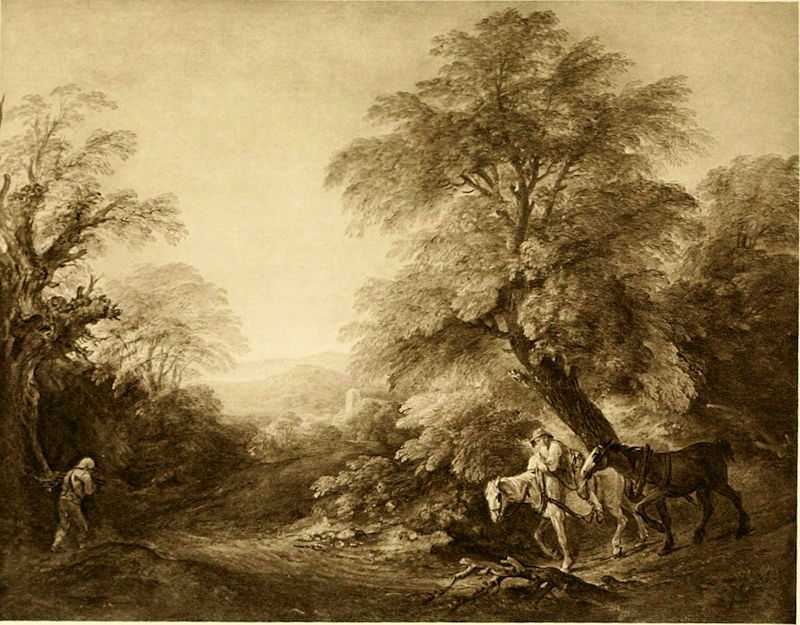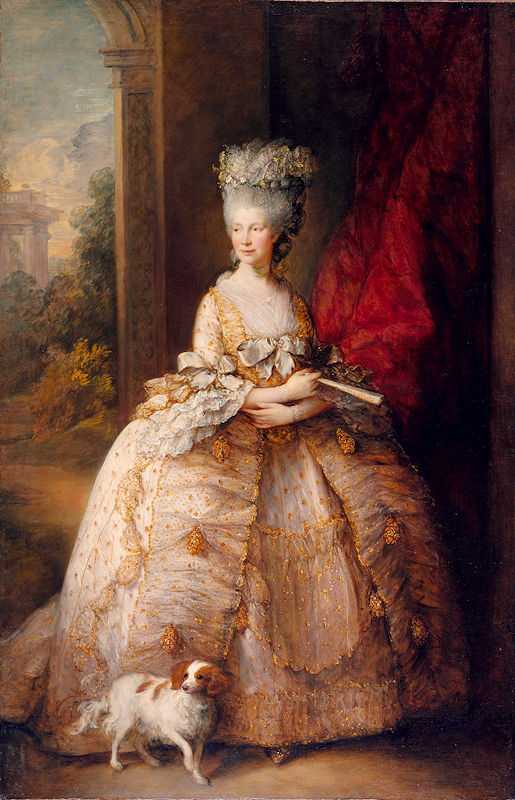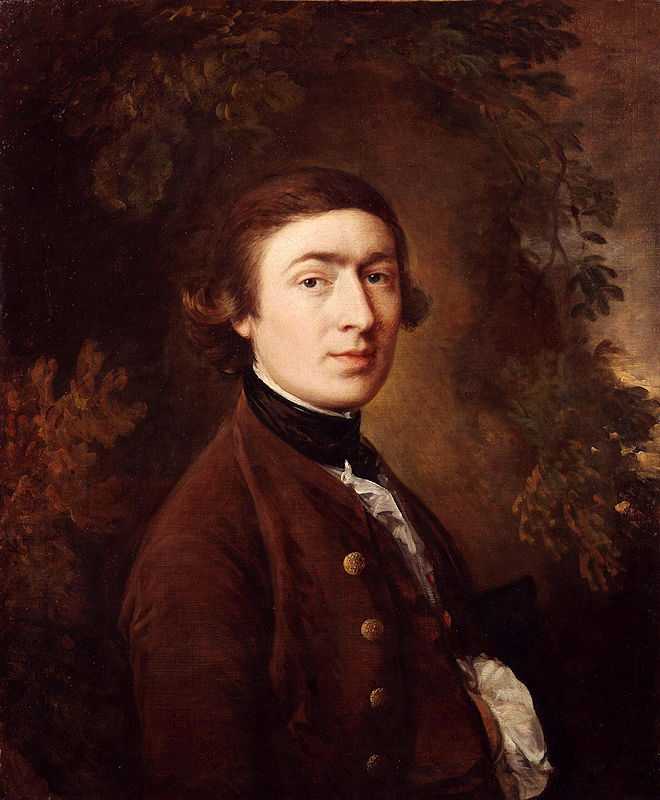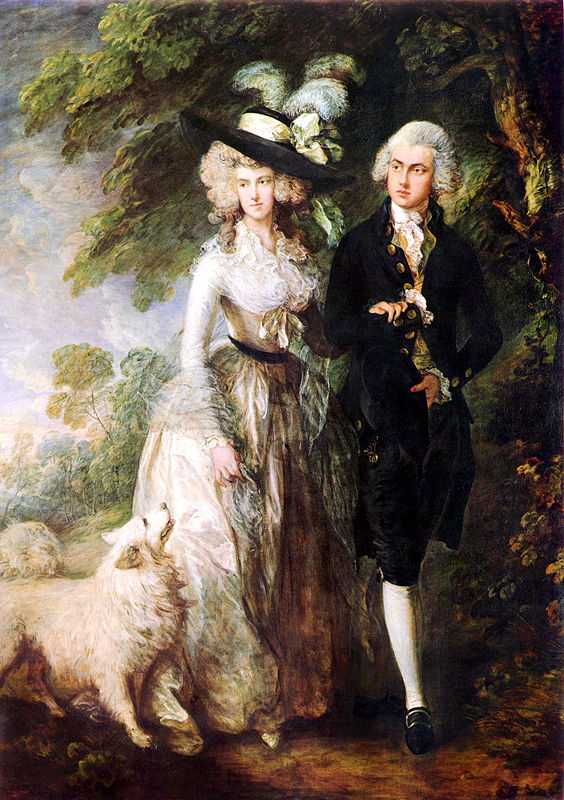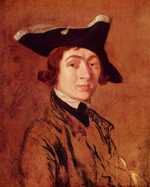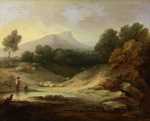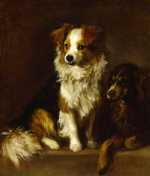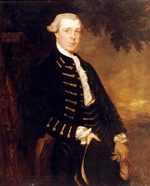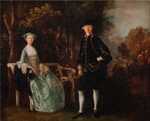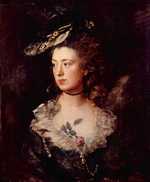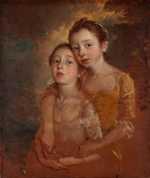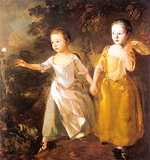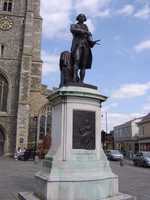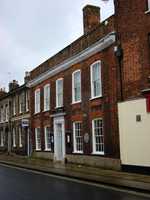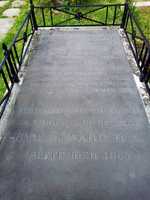1. Gainsborough's early life
Gainsborough spent his early life in Sudbury, Suffolk, the fifth son of a wool and cloth merchant.
Sudbury was a small market town, surrounded by fields and forest, as well as ancient water meadows. These rural beginnings gave Gainsborough plenty of natural subjects to study and remained central to his inspiration even after he had left home. This was where he first captured the picturesque landscapes of England’s countryside and gained his early introduction into naturalism.
He left Suffolk rather suddenly, moving to London at the age of 13. Recent research has revealed that when he was just 11 there was a double murder in his family. Gainsborough’s uncle and cousin, both of whom were also called Thomas, were killed within six months of one another, most likely by criminals associated with a man they were pursuing for debts.
This dramatic beginning helped Gainsborough to follow a career in painting, funded by the inheritance left to him by his uncle. Just months before he was attacked, his uncle changed his will to include Gainsborough, with a view to giving him a good start in life. As a result, young Thomas came into £40 through his inheritance and was able to afford to go to London. It has been suggested that his move to London was partly motivated by fears that his father and family might also be in danger.
Working in Covent Garden, Gainsborough became apprenticed to a silversmith, whilst training as an artist with Hubert Gravelot. Gravelot was a French artist and engraver, prominent in the London art scene. In the madness of the London metropolis, Gainsborough sought out artworks to serve as his inspiration in place of the natural spaces he had treasured in Suffolk. He visited private collections and auction previews, as well as studying engravings of landscapes. Meanwhile, Gravelot introduced Gainsborough to the French Rococo style, also known as Late Baroque, which had an influence on his later works.
This early start, with the threat of debtors, criminals and poverty, endowed Gainsborough with a determination to better himself. He promptly married Margaret Burr in 1746, the illegitimate daughter of the third Duke of Beaufort, providing him with a guaranteed income received annually from her father, and set to work achieving his aims.
2. Early career
Gainsborough was just 19 years old when he married and Margaret just 18. Nevertheless, the couple was aspirational and proud.
From the beginning of their marriage, when Margaret was already pregnant, the two constructed a higher social status for themselves. Margaret believed that her birthright made her a member of the upper classes and Gainsborough added to this facade, making himself into the image of a gentleman.
This can be seen most clearly in a family portrait, painted by Gainsborough in approximately 1748, when he was around 20 years old. The work shows the family well-dressed and posing in a sylvan landscape, the picture of wealth and good-breeding, thereby cementing their claim of belonging to the gentry.
As part of his wish to achieve financial security, Gainsborough chose to paint portraits over landscapes, though he much preferred the latter. At this time, portraiture was the easiest way to gain wealth, servicing the elite who had the money to pay for artworks. He quickly gained a modest reputation and made enough of a living to support his family, which now included his daughters Mary and Margaret, both in 1748 and 1752. The family moved to Ipswich and then to Bath in 1759.
Bath was an important stepping-stone for Gainsborough. The wealthy spa town in the South West England was a hub for rich, fashionable people and Gainsborough capitalised on this new market. It was an ideal setting for Gainsborough’s improvisational, impressionistic style that painted his sitters in a sympathetic and stylish fashion. He always depicted his subjects in contemporary clothing and made use of his sister’s skills as a milliner, living next door to him in Bath.
In 1768, he was elected a founder member of the Royal Academy of Arts, a sign of his ascension in the art world. In 1774 he moved to London. This transition was indicative of his rise in importance and secured his fame and fortune for the rest of his life.
However, in spite of the wealth Gainsborough was able to obtain for his family, there is evidence to suggest he never lost the memories of his childhood. He arranged for his daughters to have drawing lessons, not as a lady’s pastime but as a practical move should they ever need to earn a living for themselves. He did not want them to be like the shallow and dependent women of the upper classes; he thought it was important for them to know how to survive if they needed to. It is perhaps this mindset that meant Gainsborough never pursued his love of landscape painting wholeheartedly, instead choosing portraiture as a way of ensuring he was never poor again.
3. His finest works
Though he loved landscapes first and foremost, some of his most celebrated works are his portraits, including ‘Mr and Mrs Andrews’ and ‘The Morning Walk’.
Painted around 1750, ‘Mr and Mrs Andrews’ is considered to be the masterpiece of Gainsborough’s early career. The portrait depicts a landowning couple, set against the backdrop of their Essex estate. It combines their portraits with an equally beautiful image of the countryside around the River Stour. This portrait shows Gainsborough’s deftness when it came to natural subjects and his interest in the landscape genre. At the same time, it is an example of his sensitivity in painting changing weather patterns, unusual in paintings at this time, echoing the stormy skies of Dutch 17th century landscape painting.
‘Mr and Mrs Andrews’ is one of the few paintings by Gainsborough that accurately represents a real place, which he took care to replicate. In most of his other landscapes, Gainsborough preferred to play with the imaginary and the real. He drew on his fondness for the British landscape but combined that distinctive setting with the styles of the old masters.
Studying the aesthetic conventions of artists such as Claude Lorrain and Jacob van Ruisdael, Gainsborough borrowed from their work to create his own peculiarly English landscapes. This is demonstrated in some of his most famous works such as ‘The Watering Place’, painted when he was in London. ‘The Watering Place’ draws inspiration from the painting of the same name by Rubens but with the calmness of the work of Lorrain. It received considerable praise when it was exhibited at the Royal Academy exhibition in 1777.
Developing his technique, Gainsborough moved towards an ever more fluid style later in his career, using flowing brushwork and thinned paints to capture light. He had a habit of painting the faces of his sitters in under an hour, giving many of his works a feeling of naturalness and immediacy. This can be seen in his ‘Portrait of Margaret Gainsborough’ from 1778 to mark his wife’s 50th birthday.
Gainsborough’s portraits of his wife show their maturing relationship over the years, as well as their intimacy. Gainsborough also frequently sketched and painted his daughters. These works have a sense of closeness and realism that is not replicated in his other works of children. They are likely to have been painted from life. ‘The Painter’s Daughters Chasing a Butterfly’ and ‘The Painter's Daughters with a Cat’ are part of six double portraits he made of Mary and Margaret between 1756 and 1770. These paintings express the charm and innocence of the girls, as well as their privileged life growing up with financial security. Gainsborough’s paintings of his daughters are the most tender and observant of all his portraits, which make them some of his most popular.
4. Gainsborough's legacy
Gainsborough died of cancer in 1788 and was buried in Kew Churchyard.
By the time of his death, he had painted for an enormous range of prominent figures in the English gentry, including the King and Queen in 1781. He became a favourite of the royal family and was one of the most famous portraitists of his time.
Gainsborough changed his fortunes, starting from modest beginnings to become one of Britain’s best-known artists during his life.
He died in an elegant town house in Pall Mall, London, having built a career from portraiture but remaining ever faithful to his love of landscape painting.
Through his imaginative style, he is now credited with revolutionising the landscape painting genre in Britain, paving the way for later artists who would bring the genre firmly into the spotlight.
